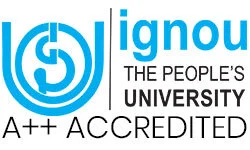
Blended Learning: Future of learning in 21st century
Across the globe, the spread of novel coronavirus COVID-19 has led to profound changes in social interaction and organization, and the education sector has not been immune. The higher education student population appears to be at a lower mortality risk category compared to older adults. Pandemic precautions called “social distancing” or “physical distancing” have attempted to reduce interpersonal contact and thereby minimize the kind of community transmission that could develop quickly in dense social networks like university campuses.
The impact of COVID-19 on such a huge group of students is certainly high, and not just in numbers. Many institutions have opted for learning at home but scholars and academicians argue that this could risk long-term educational disengagement, aggrandize the social-psychological dimension of the digital divide, and ultimately affect emotional well-being. They also point to the need to establish national guidelines that clearly detail the expectations to be placed on schools and families over the coming years.
Whatever may be the skepticisms, blended learning techniques and opportunities have overtaken the otherwise face to face teaching learning approach in both developed and developing parts of the world. With the growth of IT sector and reliance of teaching and learning processes in IT, the blend of virtual and physical interactions have set their mark permanently in the education sector.
As the world has virtually come to a stop due to this COVID-19 pandemic, the education sector has become highly affected among others. The case is no different in Nepal: the closure of schools in Nepal has had a negative impact on Nepal’s education sector. Challenges to continue education are many as a recent study shows ranging from teaching/learning opportunities, access, engagement of education volunteers and parents, lack of digital infrastructure, lack of assessment, and evaluation mechanisms among many others.
Following the logic of the exception — that extraordinary times call for extraordinary measures — one common trend in education systems around the world has been to respond to the pandemic with “emergency eLearning” protocols, marking the rapid transition of face-to-face classes to online learning systems.
While public health officials largely agree that the general threat of COVID-19 is best fought with measures of social distancing, the specific acts of instituting emergency eLearning protocols do not alter the pandemic itself, but only indirectly by limiting face-to-face classroom interactions.
A pandemic response that securitizes face-to-face instruction may well be appropriate as a measure to support broader social distancing, but there is a cost to removing face-to-face education from the realm of normal discourse.
To make the transition from old school practices to new one seamlessly, the analysis must be conducted rigorously and widely. If we are to have any hope for a post-pandemic pedagogy, we require an open discourse and an unfathomable approach incorporating all the stakeholders' concerns.
In this sense, blended learning techniques have been established as an inevitable function for realization of sustainable and continuing education. It would not be wrong to say that almost all educational institutions have incorporated online, distance and virtual teaching-learning techniques. In the past, pioneer educational institutions have laid the foundations for open and distance learning by introducing blended learning approaches challenging the otherwise rudimentary understanding of the particular field. After until the recent times, owing to the barriers caused by systemic pitfalls such as the recent global pandemic, all spheres of the academia and policy faculties have realized that ODL and blended learning is the only sustainable future of continuing education in both the global South countries such as Nepal and beyond.
 01- 4579685/ 4583902/ 4578471/ 4591485
01- 4579685/ 4583902/ 4578471/ 4591485 support@ica.edu.np
support@ica.edu.np
 9818505224
9818505224


